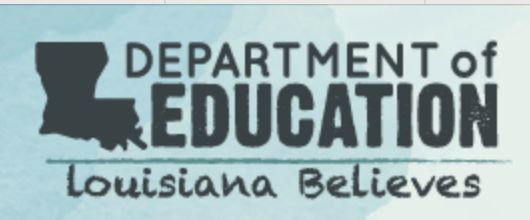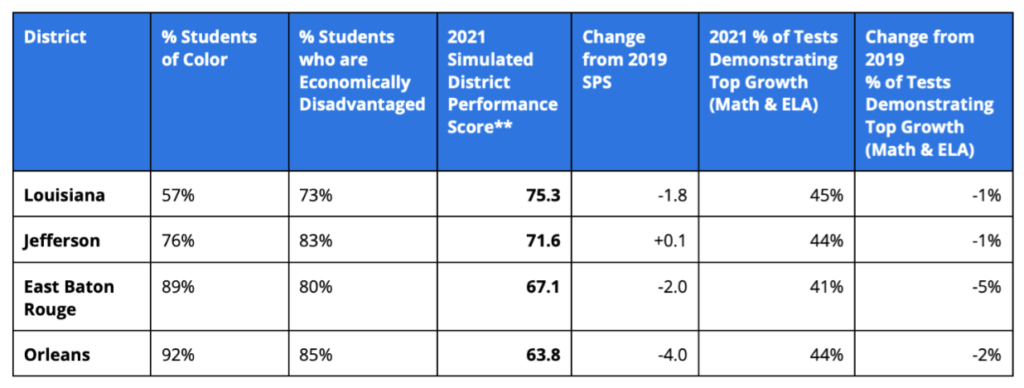While scores indicate pandemic’s impact on student learning, our schools are working hard and poised for growth.

Each year, the Louisiana Department of Education (LDOE) releases “school performance scores,” or SPS, and corresponding letter grades for schools and districts. In fall 2020, due to the start of the pandemic the prior school year, the state did not release these scores. This year, given the continued impact of the pandemic on student learning, the state is offering only “simulated” scores, and no letter grades.
These scores are meant to serve as a guide for schools and districts, and will not be used by the state to hold schools accountable this year. When compared to the last pre-pandemic scores (from 2019), they allow us to better understand the impact of the pandemic on our children and where they need to grow academically. We share some of the major “headlines” for New Orleans’ schools below.
- Most public schools in New Orleans saw a lower simulated SPS compared to their 2019 scores. SPS is based on a number of measurable factors, including an “assessment component,” which reflects students’ performance on some state and national standardized tests, including the Louisiana Educational Assessment Program (LEAP). Since students’ scores on the LEAP went down this year, we saw a corresponding decline in the assessment component of SPS for New Orleans’ public schools.
- We are not alone in seeing some decline overall. Communities across the state are grappling with similar data to navigate going forward.
- 71% of districts had a simulated DPS (district performance score) that was lower than their 2019 DPS.
- 70% of schools had a simulated SPS that was lower than their 2019 SPS.
- We did see some bright spots: Some schools saw improvements in their Progress Index, which is a component of SPS that measures student improvement, year by year. And the percentage of our students who are economically disadvantaged and demonstrated “top growth*” is around the same or higher than the statewide average and peer districts.

SPS can be a powerful tool in understanding students’ progress to grade-level standards and examining educational equity district-and-statewide. But we also know that, even in the best of times, an SPS reflects only some aspects of a school’s success. We know that external factors faced by students—such as trauma and poverty—can impact their experience and outcomes in school. We know most of the students served in our schools are economically disadvantaged, and last year, the pandemic’s impact only compounded such existing inequities and external challenges. Schools juggled in-person and virtual learning, supported students and educators through trauma, and have since taken on expanded roles to provide health services to their communities.
So while the scores are valuable, they cannot tell the full story of all our schools accomplished last year and the progress they are making now. Amidst countless obstacles, our phenomenal educators teach engaging lessons and build strong relationships with students. Counselors and school leaders are ramping up important trauma-informed, social-emotional, and mental-health supports. By offering COVID-19 testing and vaccinations, our schools not only save lives, but preserve the crucial ability to have students safely learn in-person. They partnered with local organizations to help students and families recover from Hurricane Ida. And long before SPS results emerged, schools were investing in academics in new ways; after the LEAP scores came out last spring, schools planned enhanced summer school programming for more students than ever. Around 9,000 of the city’s students continued learning through the summer.
We believe that because of all this work—the wraparound support schools give students to help them thrive mentally, physically, and academically—we will see positive trends in the years to come.
* The Top Growth measure shows us how well students who tested this past spring compared to 1) progress toward targets for achieving scores of “advanced” or “mastery” 2) their relative progress compared to other similar peers in other parts of the state.
** Scores are labeled with C19 in LDOE files, to indicate the impact of COVID-19.
